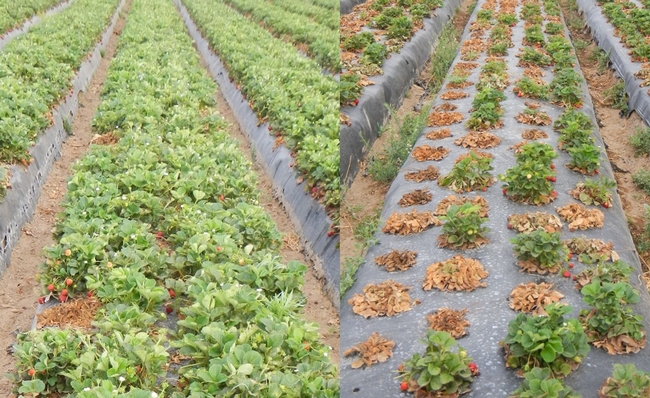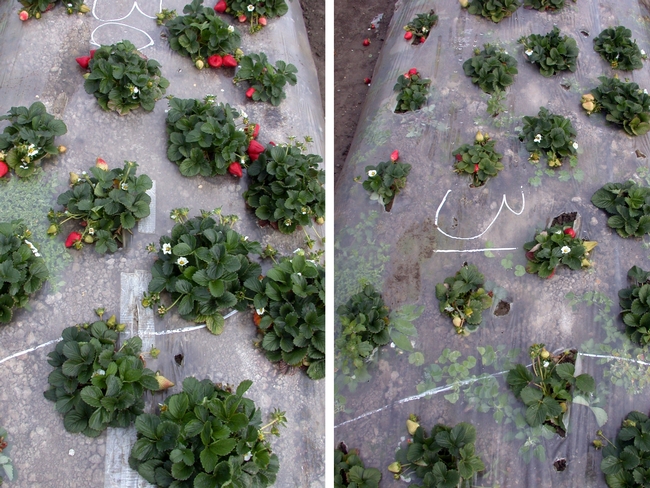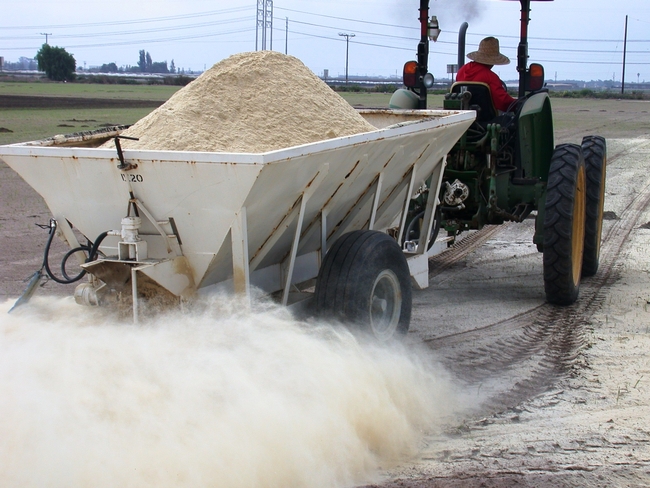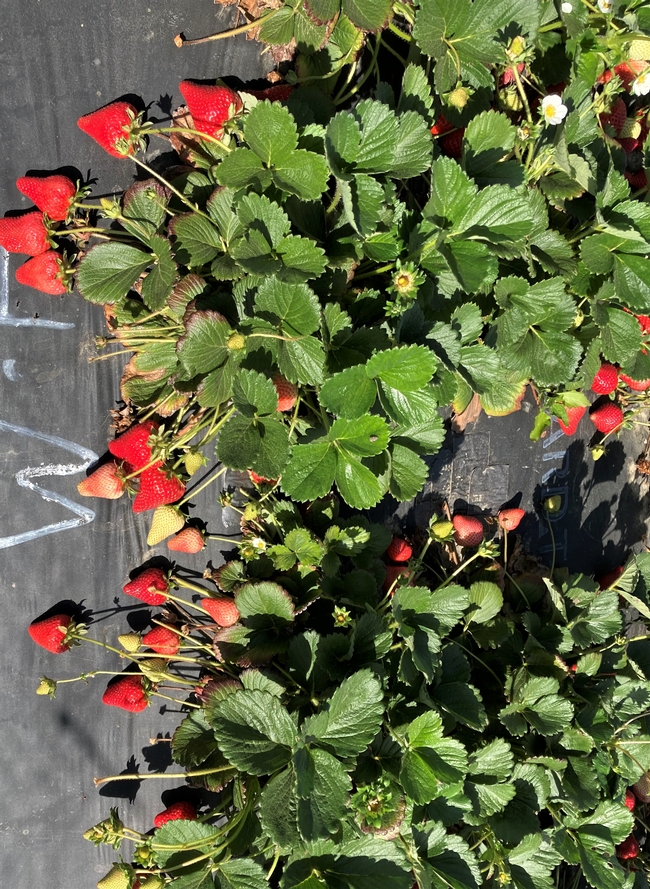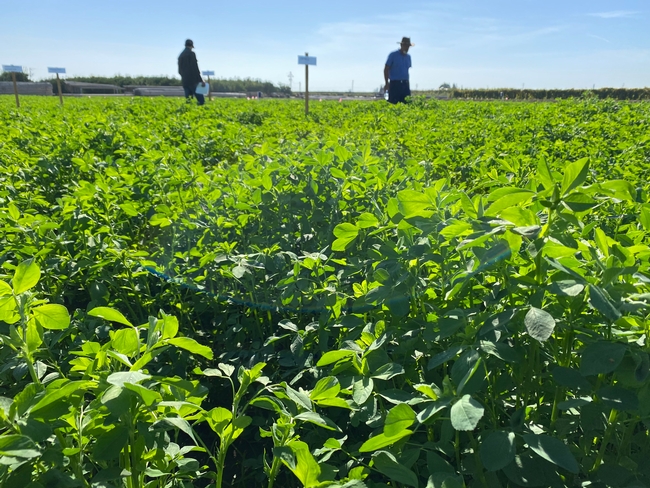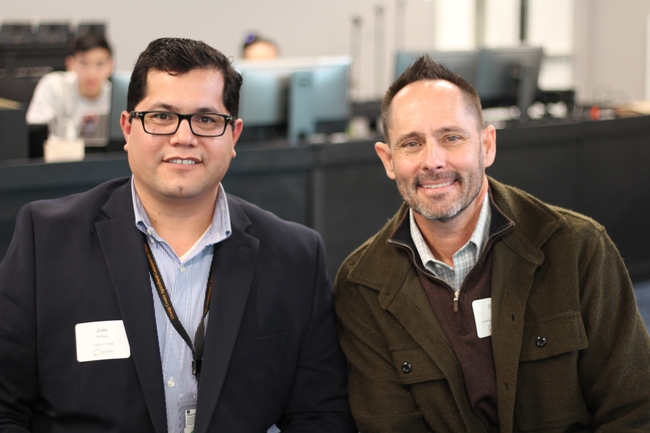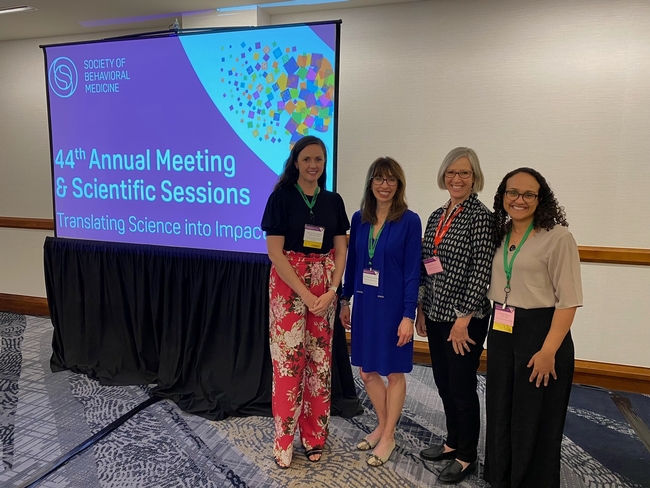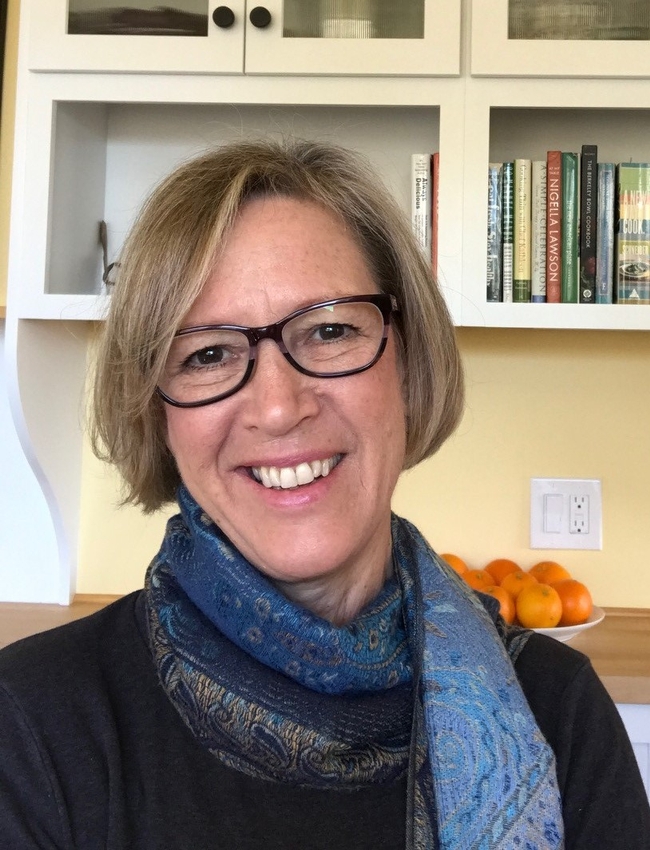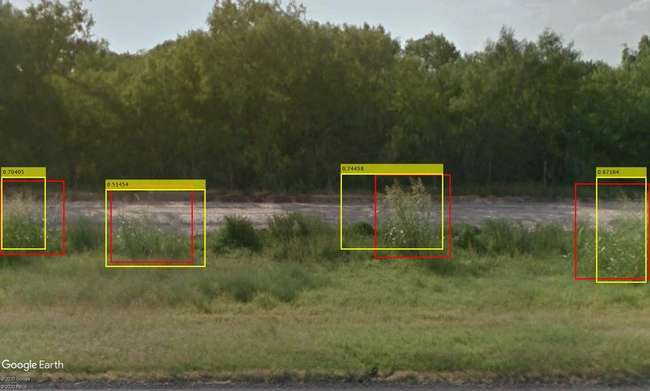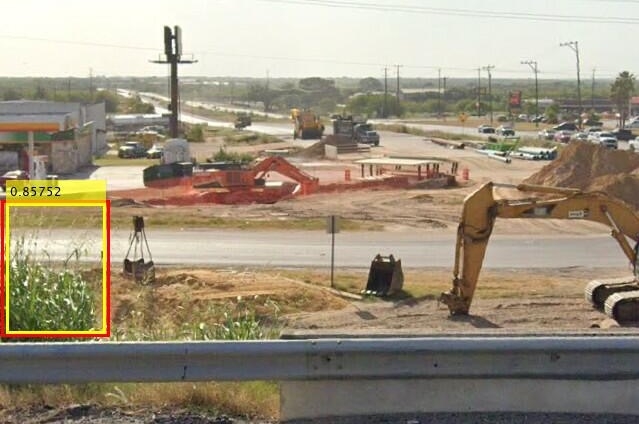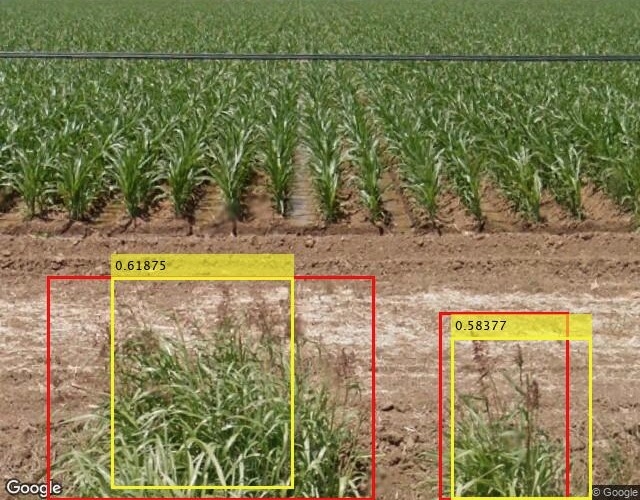Posts Tagged: innovation
Organic strawberry yields boosted by technique refined through UCCE research
Anaerobic soil disinfestation helps suppress weeds, disease without fumigants
Troubled by puny plants, low yields and persistent mite problems, third-generation Southern California strawberry grower Glen Hasegawa was ready to give up on his transition from conventional to organic 12 years ago.
“I've always liked a challenge – but it turned out to be more of a challenge than I thought it would be!” he said.
But then, with the help of scientists including Oleg Daugovish, UC Cooperative Extension strawberry and vegetable crop advisor in Ventura County, Hasegawa tried a technique called anaerobic soil disinfestation (ASD). When applied correctly, the multi-step ASD process creates a soil environment that suppresses pathogens and weeds and makes for healthier, more robust crop growth.
“Back in the day, it was really hard to get the plant growing vigorously in organic,” said Hasegawa, owner of Faria Farms in Oxnard. “So we started using the ASD and then you could definitely see that the plant had more vigor and you could grow a bigger, better plant using it.”
Seeing that he could produce yields “in the neighborhood” of those grown in conventional strawberry fields fumigated with synthetic fumigants, Hasegawa was able to expand his original 10 acres of organic strawberries to 50 acres.
“I guess you could say I'm kind of a convert,” he said, noting that he now applies ASD to all his acreage each year in late spring.
Joji Muramoto, UC Cooperative Extension specialist in organic production based at UC Santa Cruz, has been experimenting with ASD since it was first brought to the U.S. from the Netherlands and Japan in the early 2000s. Carol Shennan, a professor in the Department of Environmental Studies at UCSC, and Muramoto were among the first to try the technique in California. They found that ASD successfully controlled an outbreak of Verticillium wilt – caused by the pathogen Verticillium dahliae – at UCSC's small organic farm in 2002.
Since then, Shennan, Muramoto, Daugovish and their colleagues have seen encouraging results at 10 trial sites across the state.
“We demonstrated that ASD can provide comparable yields with fumigants, in side-by-side replicated trials,” Muramoto said.
ASD promotes host of beneficial changes to soil ecosystem
ASD comprises three basic steps: incorporating a carbon source that is easily digestible by microbes in the soil (traditionally, rice bran has been used), further encouraging fermentation by covering the soil with plastic to limit oxygen supply, and finally adding water through drip irrigation to initiate the “anaerobic” decomposition of the carbon source and maintain the three-week “cooking” process.
The resulting cascade of chemical, microbiological and physical changes to the soil creates an ecosystem that is both conducive to strawberry growth – and inhospitable to pathogens and weeds.
“It's not like a pesticide where you have a mode of action, and thus resulting in ‘A' and ‘B' for you,” Daugovish explained. “There's a sort of cocktail of events that happens in the soil; they all happen interconnectedly.”
Compared to similar fields that did not undergo the process, ASD-applied organic strawberry fields across California have seen yields increase by 60% to 70% – and even doubling in some cases, according to Daugovish.
The UCCE advisor also shared the story of a longtime grower in Ventura County, who came to him with fields in “miserable” condition; they were plagued by one of the world's worst weeds, yellow nutsedge, and infected with charcoal rot, a disease caused by the fungus Macrophomina phaseolina. But after applying rice bran and following the ASD recipe, the grower saw phenomenal results.
“The only complaint he said to me was, ‘Now I have too many berries – we have to have more pickers to pick the berries!'” Daugovish recalled.
Via researchers' meetings, online resources, on-farm demonstration trials and word of mouth from peers, use of ASD by California strawberry growers has grown significantly during the past two decades. Tracking the purchase of rice bran, Muramoto estimated that about 2,500 acres were treated by the ASD-related practices in 2023 – covering roughly half of the 5,200 total acres of organic strawberries in California.
Muramoto directly links the growth of California organic strawberry production – which now comprises about 13% of total strawberry acreage in the state – with the increasing adoption of ASD.
“If you remove the acreage with the applied rice bran over the last 10 years or so, organic strawberry acreage is just flat,” he said.
Within the last decade, acreage of organic strawberries with ASD-related practices increased by 1,640 acres, which is a boon for air quality, human health and long-term soil vitality. According to Muramoto's calculations, that increase in organic acreage translates to a reduction of about 465,000 pounds of fumigant active ingredients that would have been used in growing conventional strawberries.
“There are hundreds of reports of acute illnesses related to fumigation in the record, so it's very important to find alternatives to fumigants,” said Muramoto, citing California Department of Pesticide Regulation documents.
Research continues to make ASD more economical, effective
The popularity of ASD has come at a price, however, for organic strawberry growers.
“There's more organic out there, and I think most of the organic guys are using it, so there's more demand on the rice bran; the price has been steadily going up every year, like everything else,” said Hasegawa, adding that he has been trying to decrease the amount of carbon while maintaining ASD's efficacy.
On top of greater demand from other growers and from beef cattle and dairy producers (who use rice bran as feed), the price also has increased due to higher costs in transporting the material across the state from the Sacramento Valley. So Daugovish and his colleagues – including Peter Henry, a U.S. Department of Agriculture plant pathologist – have been searching for a cheaper alternative.
“We all want an inexpensive, locally available, reliable, easy to use and functional carbon source, which sounds like a big wish list,” Daugovish said.
Carbon sources such as bark, wood chips, or compost are ineffective, as the crucial ASD microorganisms are choosy about their food.
“Microbes are just like cows; you can't feed them straight wood; they get pretty angry,” Daugovish explained. “And if you feed them something with too much nitrogen, they can't digest it – they get the runs. Microbes are the same way – you have to have the right proportion of stuff so they feel comfortable doing what they're doing.”
In search of an ideal replacement, researchers tried and ruled out grass clippings, onion waste, glycerin and coffee grounds. Finally, they pivoted to a material with properties very similar to rice bran: wheat bran, in the form of wheat middlings (also called midds, a byproduct of flour milling) and dried distillers' grain (DDG, a byproduct of ethanol extraction).
After field experiments in Santa Paula, the UC and USDA researchers found that midds and DDG were just as effective at controlling soilborne pathogens and weeds as rice brain – but at 25% to 30% less cost. Their results were published last year in the journal Agronomy.
“Not surprisingly, the wheat bran has worked almost exactly the same as rice bran,” Daugovish said.
He and Muramoto are now conducting trials with wheat bran at commercial fields, and the initial results are promising. Daugovish said the grower at one site in Ventura County has seen a 90% reduction in Macrophomina phaseolina, the causal pathogen of charcoal rot, in the soil – and an 80% to 90% drop in yellow nutsedge germination. They are waiting for final yield numbers after the coming summer.
While ASD has been beneficial to organic productivity and soil health, both Daugovish and Muramoto acknowledged specific limitations in suppressing the “big three” strawberry diseases: Verticillium wilt, Fusarium wilt and charcoal rot. In coastal areas with cooler soil temperatures, for example, ASD can actually exacerbate the latter two diseases, as the fungal pathogens feed on the rice bran.
“We know it works at warmer temperatures, but, practically, it's hard to do in coastal California,” Muramoto said. “It would be nice if we can find a way to suppress Fusarium wilt at a lower temperature, but we don't have it right now.”
That's why researchers emphasize that ASD is not a “silver bullet.” It's just one tool in the organic toolbox, which includes careful crop rotation, disease-resistant strawberry varieties and better diagnostic tests that help growers pinpoint outbreaks and make the application of various methods more targeted and more efficient.
And scientists will continue to optimize ASD to make it more effective and economical for growers in the different strawberry regions of California – from the Central Coast to the Oxnard Plain.
“We know it can work really well; it's just finding the most sustainable way to do this in our region,” Daugovish said. “We've got to just have an open mind and keep trying.”
$1.7M granted for climate-smart planning led by UC ANR scientists
In California, natural and working lands make up 95 million acres of the state and play a vital role in building resilience to the impacts of climate change. University of California Agriculture and Natural Resources was awarded $1.7 million for the California Next Generation and Equitable Climate Action Plan, as part of the state's Natural and Working Lands Climate Smart Strategy and California's 30x30 Initiative, an effort to conserve 30% of the state's lands and coastal waters by 2030.
Natural and working lands include both unmanaged and managed areas actively used for agriculture, forestry or production purposes.
Chandra Richards, UC Cooperative Extension agricultural land acquisitions academic coordinator for Southern California, and Cristina Murillo-Barrick, UCCE's Black, Indigenous and People of Color community development advisor for the Bay Area, are leading the California Next Generation and Equitable Climate Action Plan project.
To build capacity and technical assistance for climate-smart action planning, Richards and Murillo-Barrick will use the Climate Smart Land Management Program funding, awarded through the California Department of Conservation, to focus on two of the most pressing climate action issues: equitable land access and land management diversification.
According to the 2022 U.S. Department of Agriculture census, demographic data indicates that California agricultural land ownership and production is concentrated within an aging and mostly White demographic. However, research suggests diverse management practices promote healthy landscapes. This has been shown to benefit the environment, human health and climate resilience in multiple ways.
For this reason, this project centers on “historically underrepresented communities,” a term that includes California Native American Tribes, communities of color, landless farmers, immigrant and non-English speaking communities and other agency-designated minority groups (racial, ethnic and non-male groups, socially disadvantaged farmers and ranchers, and California designated severely disadvantaged communities).
Focusing on Southern California, UC Cooperative Extension scientists will identify barriers to land access, management and opportunities to increase land manager diversity. They also will engage historically underrepresented communities in coalition building, capacity assessment and climate action planning.
Within the last few decades, Californians have faced increased ecosystem stressors and decreasing diversity of natural systems. This pattern continues to damage already-vulnerable communities (disproportionately historically underrepresented communities), while also worsening and intensifying climate impacts, including drought, wildfire, flooding and disease. Overcoming these kinds of systemic and structural challenges will require the next generation of land managers to reflect California equitably, while preparing them to take on climate resilience. The project will determine clear solutions and plans that enable long-term, strategic land use and protection.
To do this work, UCCE is collaborating with the Community Alliance with Family Farms (CAFF), California Association of Resource Conservation Districts (CARCD) and the California Bountiful Foundation, all of whom serve as subgrantees and will deepen connections with communities.
Organizations like CARCD have long served as “boots on the ground” personnel and have close relationships with landowners and land managers. “RCDs have been hearing the land equity need for a long time and are actively collaborating with different partners to tackle this pressing issue,” said Qi Zhou, program manager of Justice, Equity, Diversity and Inclusion at CARCD and member of the Strategic Growth Council Land Equity Task Force.
“California RCDs are excited about this project because it will allow major California agriculture and conservation partners to collaboratively develop plans and implement projects centering on equity land access and land management diversification,” Zhou added.
Project lead Richards said $270,000 of the grant will be reserved for new partnerships with organizations in Southern California that have experience with, and strong ties to, historically underserved communities.
UC ANR is collaborating with the California Department of Food and Agriculture as well as California Climate and Agriculture Network (CalCAN), and World Be Well, a Southern California nonprofit.
Tawny Mata, CDFA's director of the Office of Environmental Farming and Innovation, described technical assistance providers as being grounded in their local agricultural communities and recognized their importance to partners in the success of CDFA's incentive programs.
“When we do succeed in reaching historically underserved farmers and ranchers with our grant programs, it is often with the thoughtful support and planning of a technical assistance provider,” Mata said. “I look forward to this project helping us refine our own technical assistance funding programs and bringing technical assistance providers together to network and share best practices for improving land access and promoting climate-smart agriculture.”
“The successes of this project will elevate the voices of historically underrepresented communities, strengthening efforts in these communities to support climate action,” said Richards. Additionally, the project will increase sharing of regional reports, needs assessments and community plans surrounding climate-smart management practices. Finally, it will boost technical assistance for these groups specifically.
To learn more about the Climate Smart Land Management Program and this year's awardees, visit:
REC System Director Haver encourages systemic approach to agriculture
Agriculture generates $59 billion and employs nearly 400,000 individuals in California. The industry, however, is often threatened by challenges like climate change, land conversion and water scarcity. Motivated to act, Sustain Southern California – an organization associated with UC Irvine Beall Applied Innovation – hosted a roundtable discussion on Feb. 20 featuring subject matter experts including Darren Haver, director of UC Agriculture and Natural Resources' Research and Extension Center System.
During his keynote address, Jose Arriaga, Orange County Agricultural Commissioner, defined sustainability as food and fiber production that does not compromise the ability for future generations to meet their needs. In doing so, he acknowledged the benefit of discussing such timely topics with key players, especially for places where agriculture is not as prevalent as it used to be.
“Many people don't think of Orange County as a place for agriculture. It's probably because less land is being reserved for agriculture, not like back in the day. And that worries me,” said Arriaga.
The first roundtable discussion centered on sustainable agriculture, with Haver participating alongside other industry leaders based in Southern California, including A.G. Kawamura of Orange County Produce, Steve Brazeel of Sunterra Produce and Elevated Foods, Anthony Curci of Buttonwood Ranch and Parker Cohn from Performance Resource Management.
In discussing today's generation, Haver said that he has seen a shift over the last few decades away from yield alone, which used to be the most important aspect of production in agriculture. Today, much more attention is dedicated to sustainability – a change that Haver attributes to the younger generation of researchers and plant scientists working in agriculture.
There has also been an emphasis on sustaining the environment while maintaining economic progress. Haver recognized these important elements, but highlighted the social impact of sustainability, too.
“I don't have all the answers, but I do believe that addressing the environmental, economic and social aspects of agriculture is important. I also think that these factors should be addressed systemically rather than in silos,” said Haver.
Southern California agricultural producers, in particular, are responsible for $7.8 billion in gross receipts and nearly 100,000 jobs directly related to agriculture. In Orange County alone, where Haver is based at the South Coast Research and Extension Center, agriculture makes up $86 million of total economic output, with nurseries leading as a top commodity followed by fruit trees, vegetable production and livestock and apiary.
Rauzon, visionary in community health evaluation, retires from NPI
Nutrition Policy Institute researcher developed techniques that help identify effective public health programs
When Suzanne Rauzon and May Wang were in the master's of public health program at the University of California, Berkeley during the mid-1980s, Wang knew that her classmate had unique brilliance to bring to their field.
“You know how you vote for the person in high school who's most likely to succeed? That was Suzanne,” said May Wang, a professor of community health sciences in the UCLA Fielding School of Public Health. “Suzanne was always ahead of every one of us; she was so visionary and forward-thinking and I think we were all – to be honest – a little bit in awe of her.”
Decades later, as Rauzon prepares to retire in January 2024 as director of community health at the Nutrition Policy Institute, she has fulfilled that exceptional promise. Her many contributions are helping communities identify the most effective programs to benefit public health.
Lorrene Ritchie, director of NPI (an institute under UC Agriculture and Natural Resources), said that Rauzon has played a pivotal role in translating research findings into community action and policy change. She added that Rauzon has brought an extraordinary combination of strategic vision for the overall direction of nutrition studies and tactical savvy to anticipate the needs of project funders and communities.
“Few people can bring both of those skills – efficiently complete the day-to-day tasks as well as be a big-picture thinker,” Ritchie said. “She has been so instrumental in contributing to NPI's impacts.”
A unique skill set to tackle complex challenges
Part of what makes Rauzon unique in her field is her extensive experience in the private sector. After attaining her master's degree, Rauzon developed a comprehensive employee worksite wellness initiative at a telecommunications company – a new set of programs that led the field in the 1990s.
“Suzanne was, is and has always been very visionary,” Wang said.
After years in the corporate space, however, Rauzon leaped at the chance to return to academia (and reunite with Wang) in 2001 at UC Berkeley's Center for Weight and Health, a precursor to NPI. Working with center co-director Patricia Crawford, Rauzon said the project to investigate the effects of sugar-sweetened beverages was a “perfect fit” for her.
Concerned with rising childhood obesity, the researchers studied the significant differences in health outcomes for students in high schools that limited access to beverages such as soft drinks, versus schools that did not.
“That field in general – looking to limit sugar-sweetened beverages – started with a focus in schools, and expanded into other environments (such as college campuses) over the years, and has continued to be a focus in public health,” Rauzon said, “all the way up to work now on limiting sugar-sweetened beverages access in other public institutions.”
Rauzon's change-management and communication skills also were crucial in studying the revolutionary School Lunch Initiative in the Berkeley Unified School District – a collaboration with chef Alice Waters' Chez Panisse Foundation and the Center for Ecoliteracy to engage young people in the growing and preparation of food. Brought in to evaluate the efficacy of the program, Wang and Rauzon found they had to alter their mindset and methods when working with partners who were responding to oft-changing circumstances.
Rauzon's cross-sector perspective, practical know-how and people skills in cultivating positive relationships with district staff and educators were instrumental in successfully completing studies with as much rigor as possible in real-world settings such as schools.
The researchers created new analytical tools to evaluate health interventions developed by communities themselves – as opposed to programs engineered by academics and applied to community members with the expectation that they would accept it.
“Most researchers, to be honest, are still striving to do that with communities,” Wang said. “It is an incredibly challenging task because communities will do what they want to do – and what they need to do – to respond to the needs of people.”
Wang, who now trains academics in community-based participatory research, said that the ground-up paradigm has been shaped by Rauzon's thinking. “A lot of the ideas I have today really came about from our work together on the School Lunch Initiative,” Wang said.
A legacy of new methods, mentoring early-career professionals
One of Rauzon's longest-running – and most complex – projects has been the evaluation of community health interventions across the country, including a variety of Kaiser Permanente initiatives to promote healthy eating and physical activity.
“What was interesting about that work was we really were trying to understand the combined effects of doing a lot of different things that are related – and to see the overall effect that can have on the community,” said Rauzon, noting that interventions ranged from nutrition classes to policy changes to park and bike-safety improvements.
Wang said some of their findings, particularly from one study in Los Angeles County, suggest that effective programs are early childhood interventions (including an emphasis on breastfeeding), home visitations by nurses and social workers to vulnerable households, and partnerships with retailers to make healthy food choices more accessible.
In the process, the researchers helped pioneer new research tools – including interdisciplinary “systems mapping” approaches in which computer scientists discern linkages among various programs and their effects, and the highly influential “community intervention dose index” concept that can be used to evaluate multiple intervention strategies within a community.
In addition to Rauzon's contributions in research and evaluation, Ritchie also highlighted her role in supervising and mentoring students and NPI staff and researchers during her 20-plus years with the UC – the role in which Rauzon takes the most pride.
“While I made a contribution to community health in effective interventions and how to measure them,” Rauzon said, “I would say personally the most rewarding part of the work I've done over the last couple of decades is seeing the growth and development and advancement of people who have worked for me and who have really taken off in their own careers – that to me has been immensely satisfying.”
As an emeritus researcher, Rauzon will continue to support NPI professionals and their research, and she added that she's excited to embark on a new partnership – with her husband, a geographer – to mitigate impacts of climate change on human and environmental health across the globe.
People interested in supporting Rauzon's legacy and the ongoing work in health and nutrition can donate to NPI's Student Fellowship, which provides students from underrepresented groups the opportunity to work on NPI research and be mentored by NPI researchers.
Google Weed View? Professor trains computer to spot invasive weed
Algorithm for AI enables low-cost tracking of invasive plant
To manage johnsongrass, a noxious weed that crowds out cotton and sickens horses, farmers have tried herbicides, burning and hand-pulling. Now, researchers at University of California, Davis, have developed a more high-tech weapon against the invasive weed: artificial intelligence and machine learning.
Using photos from Google's Street View database, UC Davis researchers have tracked down over 2,000 cases of johnsongrass in the Western United States for a fraction of the cost and time that it would take to do drive-by or other in-person surveys. They call their tool Google Weed View.
The advancement could help land managers easily and quickly survey for other problem plants.
“Once the model is trained, you can just go and run it on millions of images from Google Street View,” said Mohsen Mesgaran, an assistant professor in the Department of Plant Sciences at UC Davis. “We have huge flexibility, and its capability can be scaled up very quickly.”
The technique can easily be extended to other plant species. All that is needed is to label the new item in Street View photos and train the algorithm to identify that object in the images.
By providing location information, Google Weed View also offers an opportunity to examine how climate affects the growth and spread of weeds and invasive plants at very large scales.
“I think it can be both useful for management and for people with interests in more basic questions in ecology,” Mesgaran said.
A colleague's query
Mesgaran began looking at using Google's photo database of roadways, streets and highways after Kassim Al-Khatib, a professor of Cooperative Extension in the same department, asked if he could survey Western states for johnsongrass.
Al-Khatib studies where johnsongrass grows, ways to manage it and how this perennial has evolved to be so prevalent and resilient. He's also working with scientists at the University of Georgia to decode the genome of johnsongrass, which is one of the top 10 most invasive weeds worldwide.
Johnsongrass can crowd out native plants, harbor pathogens and affect agriculture. It grows up to 7 feet tall with flowers that are green, violet, dark red or purplish brown depending on maturity, according to a UC Statewide Integrated Pest Management Program briefing page.
“Johnsongrass is a major weed not just in California but worldwide,” Al-Khatib said. “It's very difficult to control. It's a problem on vineyards. It's a problem for cultivated crops. It's a problem on orchards.”
Google Weed View allows for rapid, convenient scanning. It is continuously updated via everyday users with compatible cameras and images collected by Google. “Instead of a day of in-person driving, we can use AI to determine if johnsongrass is in a county or not,” Al-Khatib said.
Setting the parameters
To find the weeds, Mesgaran went to Google Street View, which hosts billions of panoramic photos. It didn't take long to find johnsongrass.
“The pictures are really good quality,” he said. “You can see plants and flowers.”
Street View's photos offer a 360-degree view, so in his request Mesgaran set parameters, based on street direction (bearing), to only see the side view. He also specified latitude and longitude, and other factors. To train the deep, or machine learning model, he chose Texas, where johnsongrass is prevalent.
A student sorted through over 20,000 images from that request to find pictures with johnsongrass and drew rectangular shapes around the weeds. They located 1,000 images.
The labeled photos were fed into a computer to train a deep learning algorithm capable of identifying johnsongrass in Google's images. The model was run again to capture potentially more images containing johnsongrass. These additional images were then labeled and used to further refine the model. With each iteration, the algorithm learned and became more accurate.
“This deep learning model was trained by these images,” Mesgaran said. “Once we had a semi-working model, we ran it against about 300,000 images.”
For Al-Khatib's request, researchers focused on 84,000 miles of main roads in California, Nevada, Oregon and Washington states. The team discovered 2,000 locations with johnsongrass.
Google Weed View cost less than $2,000 to purchase the images and teach the model. A traditional car survey to cover the same area would cost an estimated $40,000 in gas, hotel, food and other costs.
“In a matter of months, we came up with 2,000 records and I can do it for the whole U.S.,” Mesgaran said.
Next up? The entire United States.
This story was originally published on the UC Davis College of Agricultural and Environmental Sciences news site.

